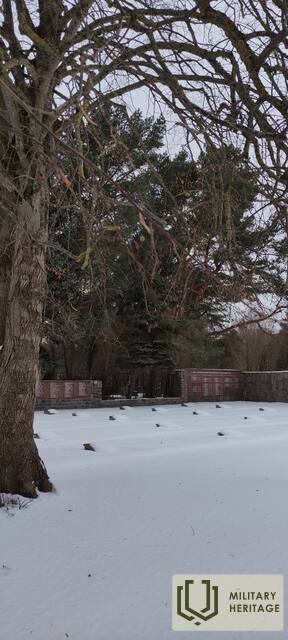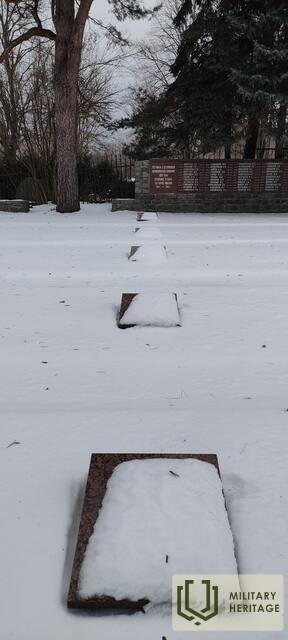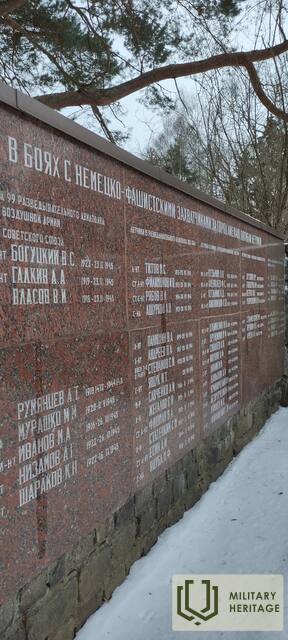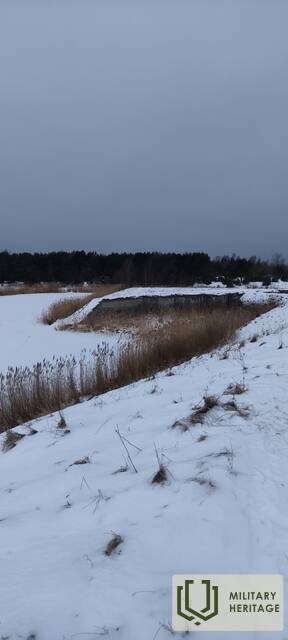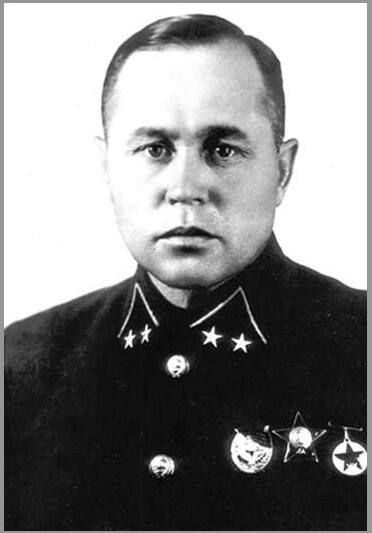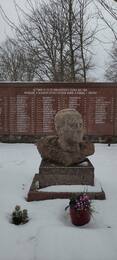Monument to the commander of the 67th Red Army Rifle Division N. Dedayev
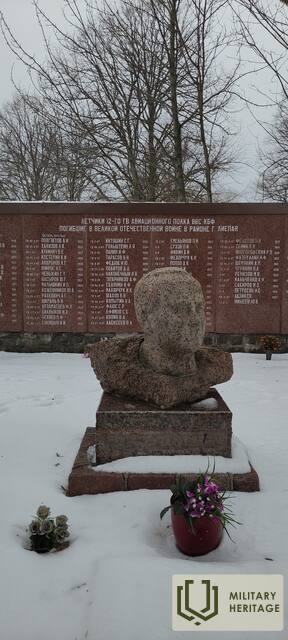
To the north of the South Fort is the largest cemetery in Liepāja - the Central Cemetery. In the southern part of the cemetery there is a Red Army cemetery, where Soviet soldiers who died in the vicinity of Liepāja are reburied, including the commander of the 67th Rifle Division, Major General Nikolai Dedaev, who led the defence of Liepāja in June 1941.
On the early morning of June 24, 1941, an attack by a unit of the 505th Infantry Regiment of the 291st Infantry Division of the German Army under the command of Colonel K. Lomeijer near the Middle Fort of Liepāja Fortress began, after the capture of Priekule and Grobiņa. The first attack was unsuccessful and another attack was scheduled for the morning of 25 June. During this time, northwest of the Middle Fort at the command post of the 67th Rifle Division, which was located in the artillery ammunition depot of Liepāja Fortress No. 8 (now Grīzupes Street), several German artillery shells were hit and Major General N. Dedayev was injured. N. Dedayev died in a naval hospital and was buried near the brothers' cemetery. He was reburied in Tosmare Cemetery in 1947, and in 1977 in the Central Cemetery near the Southern Fort. Despite the losses of the Soviets, the German units also failed to break through the embankment of the Liepāja fortress on June 25. The battles in Liepaja ended on June 27 and 28, when Soviet units tried to break north.
In the southern part of the central cemetery, there is a monument to Major General N. Dedayev in the cemetery of the Red Army soldiers.
The government supports the dismantling of 69 monuments glorifying the Soviet and Nazi regimes / Article (lsm.lv)
List of objects glorifying the Soviet and Nazi regimes on the territory of the Republic of Latvia to be dismantled (likumi.lv)
Related timeline
Related topics
Related objects
Liepaja Fortress South Fort and monument to N. Dedaev, commander of the 67th Rifle Division of the Red Army
The South Fort of Liepaja Fortress is located in the south-western part of Liepaja, between Klaipėda Street and the beach.
A fort was planned to protect the port of Emperor Alexander III from the south, two kilometres from the southern border of the city. The fort was to be located between Liepāja Lake and the sea, west of the outlet of the Thunder River, reinforcing the reinforced concrete fortifications with a moat. Although the fortifications were almost completely finished, the armaments had not been deployed. The constructed cellars were used as storage facilities both during the First World War and during the Second World War. In the 1920s and 1930s, various factories were located in the fortification area. Unlike the Middle Fort and Ravelin, the South Fort never took part in the war, because in all the wars the invaders besieged the eastern shore of Lake Liepāja and tried to invade Liepāja between Lakes Tosmare and Liepāja.
To the north of the South Fort is Liepāja's largest cemetery, the Central Cemetery. In the southern part of the cemetery there is a Red Army cemetery where Soviet soldiers who died in the vicinity of Liepāja are reburied, including the commander of the 67th Rifle Division, Major General Nikolai Dedaev, who led the defence of Liepāja in June 1941.
Liepaja Fortress Middle Fort and Monument to the Soldiers of the Red Army
The most dangerous direction of attack for the port of Emperor Alexander III was from the east between the lakes of Tosmare and Liepāja, where there was a 2.5 km wide strait of land. Three fortifications were built to defend the land strip. On the southern shore of Lake Tosmare there was a left redoubt, on the northern shore of Lake Liepāja a right redoubt, and between the redoubts there was a Middle Fort. The Middle Fort was the most serious fortification of the Liepaja Fortress, but it was not fully completed and artillery was not deployed until 1908.
It was at the Middle Fort that the most serious battles took place in April 1915, when German troops attacked, in November 1919 during the Latvian Army's battles against the West Russian Liberation Army, and in June 1941, when Liepāja was attacked by the 291st Infantry Division of the German Armored Forces.
In June 1941, when hostilities between Nazi Germany and the Soviet Union broke out, the Liepaja garrison of the Soviet Army consisted of units of the Liepaja naval base of the Navy and the Red Army. The Liepaja naval base consisted of mine trawler, torpedo boat and submarine divisions, including former Latvian Navy ships and submarines. The coastal defence was carried out by the 23rd and 27th artillery batteries with 130 mm guns and the 18th railway artillery battery with 180 mm guns, covered by two Zenith artillery divisions. The base also included several sapper, repair, liaison and training units, totalling some 4 000 soldiers, commanded by Captain M. Klevenski, 1st rank. Of the Red Army units, the garrison was manned by the 67th Rifle Division (minus the 114th Rifle Regiment and one artillery division), commanded by Major-General N. Dedaev. The division had about 9000 soldiers before the outbreak of hostilities. The 143rd Fighter Aviation Regiment with 68 aircraft of various types was stationed at Liepāja airfield. In addition, the 12th Border Guard Unit operated in the Liepāja area.
The battle action at the Liepaja Fortress began in the early morning of 24 June 1941. Despite the Soviet losses, the German units were unable to break through the Liepaja Fortress rampart on 25 June. The fighting in Liepāja ended on 27 and 28 June, when Soviet units tried to break northwards.




